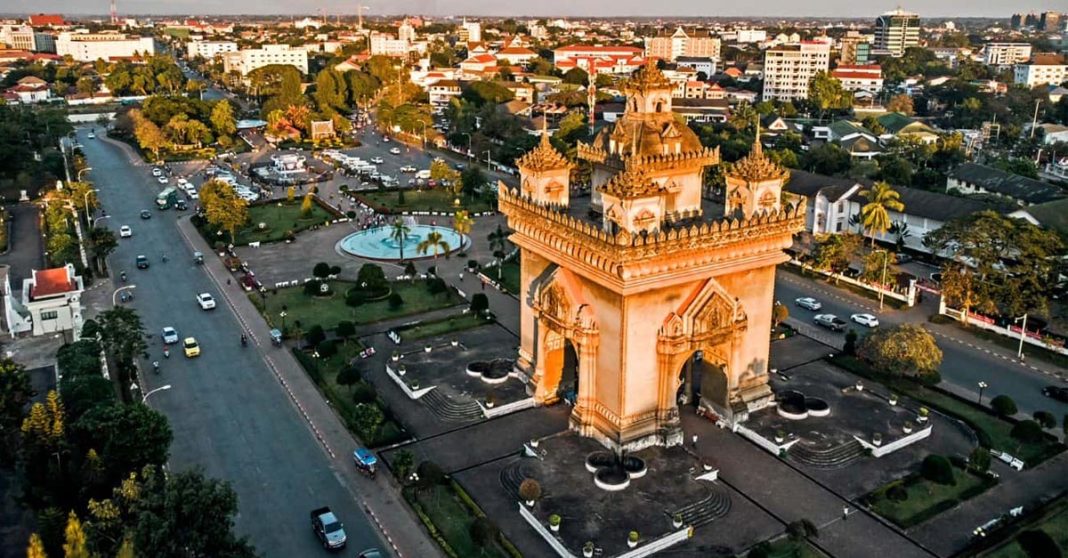As 2023 nears its conclusion, Laos continues to face economic challenges, including surging inflation, a scarcity of labor, and an expanding trade deficit. In response, the nation has initiated the Visit Lao Year 2024 campaign, turning to tourism as a key strategy to overcome economic obstacles and lay the groundwork for a prosperous ASEAN chairmanship in 2024.
The government officially announced the launch of the campaign back in January with measures to improve public transport accessibility, with a focus on simplifying ticket sales for the Laos-China Railway. The plan also included completing infrastructure projects such as roads and airports, restoring highways damaged by natural disasters, and resolving the labor shortage in the hospitality sector.
According to Logistics Capacity Assessments (LCA), only 28 percent of roads in the country are paved, and more than 60 percent of national roads are considered to be in poor or bad condition. To address this, the government plans to enhance technical standards and increase the number of weighing stations across the country. Currently, only 14 weighing stations are operational, serving as checkpoints for heavily loaded trucks to ensure compliance with weight limits.
These efforts aim to prevent poor road conditions from adversely affecting tourists during Visit Lao Year 2024.
Another challenging aspect of Laos’ economic sector lies in the labor shortage. This year, a substantial number of Lao workers have opted to seek employment abroad in pursuit of higher wages, primarily driven by the continuous depreciation of the Lao kip, which struggles to keep pace with the world market.
The ongoing depreciation of the Lao kip can be traced back to 2020, triggered by the Covid-19 pandemic. Throughout 2022 and 2023, the kip has experienced a steady decline, reaching a historic low in international markets by August. Despite the Bank of the Lao PDR setting the exchange rate at LAK 19,917 to the US dollar, commercial banks have been selling at rates dropping below LAK 20,000.
In an attempt to effectively tackle the issue, government organizations in Laos have actively supported and facilitated workers in securing temporary employment opportunities overseas, particularly in countries such as South Korea, Thailand, and Japan, through established legal channels and programs.
Despite the ongoing efforts, the country continues to grapple with economic instability and a high trade deficit, marking the eighth month of the year and the seventh consecutive month of deficits in November. Data from the Lao Trade Portal reveals that in November, Laos had a total trade volume of USD 986 million, with USD 625 million in imports and USD 361 million in exports, resulting in a trade deficit of around USD 264 million.
As the economic expansion of Laos has been hampered by challenges such as economic pressures from high public debt and a weakened local currency, in September, the Asian Development Bank (ADB) revised down its growth forecast for Laos in 2023 to 3.7 percent from the earlier projection of 4 percent.
Rising Above Economic Challenges for a Prosperous 2024
Despite numerous economic challenges, Laos has achieved noteworthy success in curbing its inflation rate. Initially recorded at a staggering 40.30 percent in January, the latest December inflation report reveals a significant reduction, with the rate now resting at 24.3 percent.
In response to the surging inflation rate, the Bank of the Lao PDR (BOL) has outlined a strategic goal to bring inflation down to 9 percent or another single-digit figure by the conclusion of 2024. The central bank is set to bolster the enforcement of monetary policy, with a focus on increasing the domestic money supply, channeling export income into the banking system, and harmonizing currency exchange rates with market mechanisms. Complementary efforts will concentrate on fostering greater flexibility in foreign currency exchange and elevating the quality of services provided by commercial banks.
In another noteworthy development this year, Laos was appointed the ASEAN Chair for 2024. The official handover ceremony took place during the closing of the 43rd ASEAN Summit in Jakarta, Indonesia, on September 7. Lao Prime Minister Sonexay Siphandone received the ASEAN Chairmanship gavel from Indonesian President Joko Widodo during the ceremony. In his pledge, Prime Minister Siphandone expressed his commitment to foster a more connected and resilient region during Laos’ chairmanship in 2024.
As preparations intensify for both the ASEAN Chairmanship and Visit Laos Year 2024, the Department of Information, Culture, and Tourism in Vientiane Capital is closely monitoring the enhancement of hotels, restaurants, and tourist attractions. This is part of the comprehensive preparations to host high-level meetings and a greater influx of foreign tourists in the upcoming year.
The department is placing emphasis on the renovation of key tourist attractions in Vientiane Capital, including landmarks such as Pha That Luang Stupa, Ho Phrakeo Museum, Sisaket Temple, and Patuxai Monument.
On a regional level, Laos is determined to carry on Indonesia’s initiatives to build a more connected and resilient ASEAN amidst widespread concerns about the unresolved crisis in Myanmar, which continues to pose a significant challenge for the region. Nevertheless, Laos remains committed to contributing to the collective efforts aimed at strengthening ASEAN.



